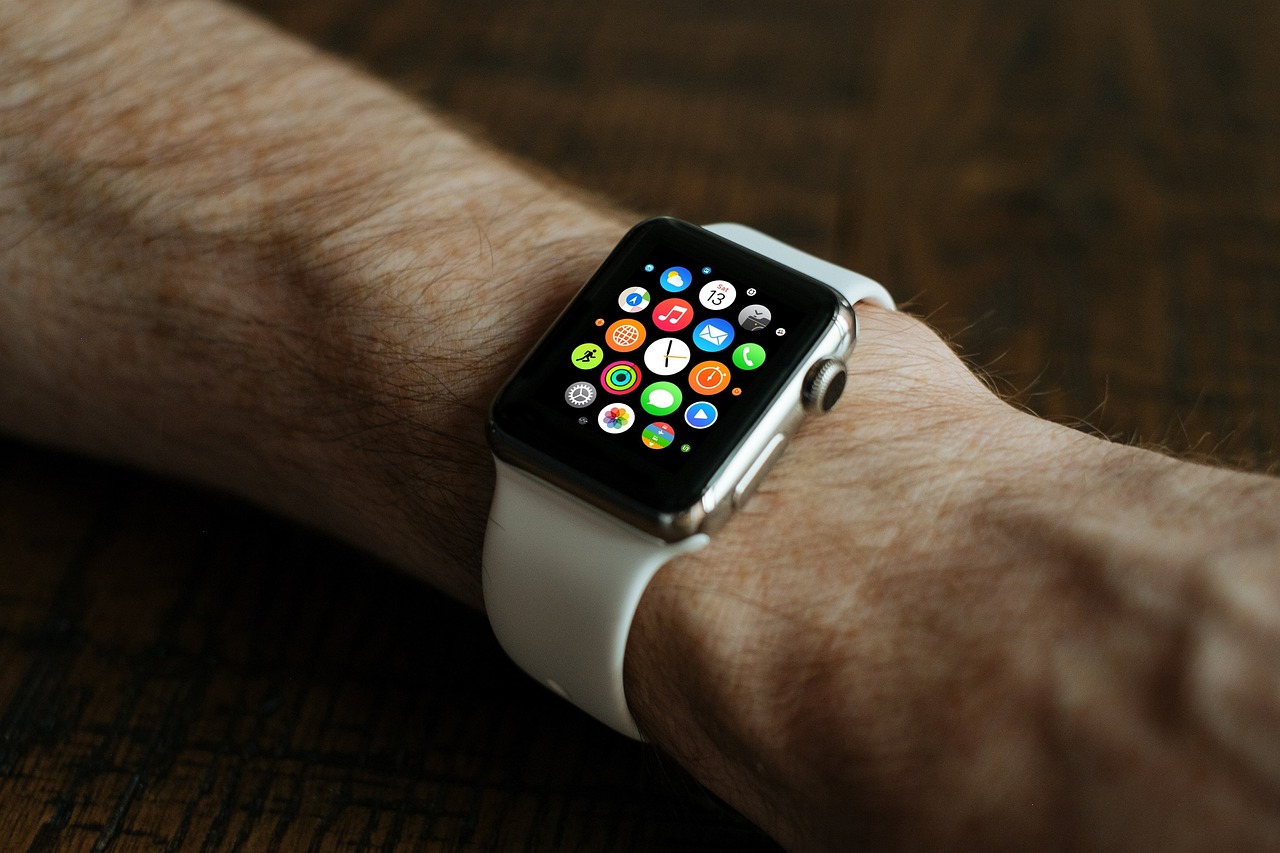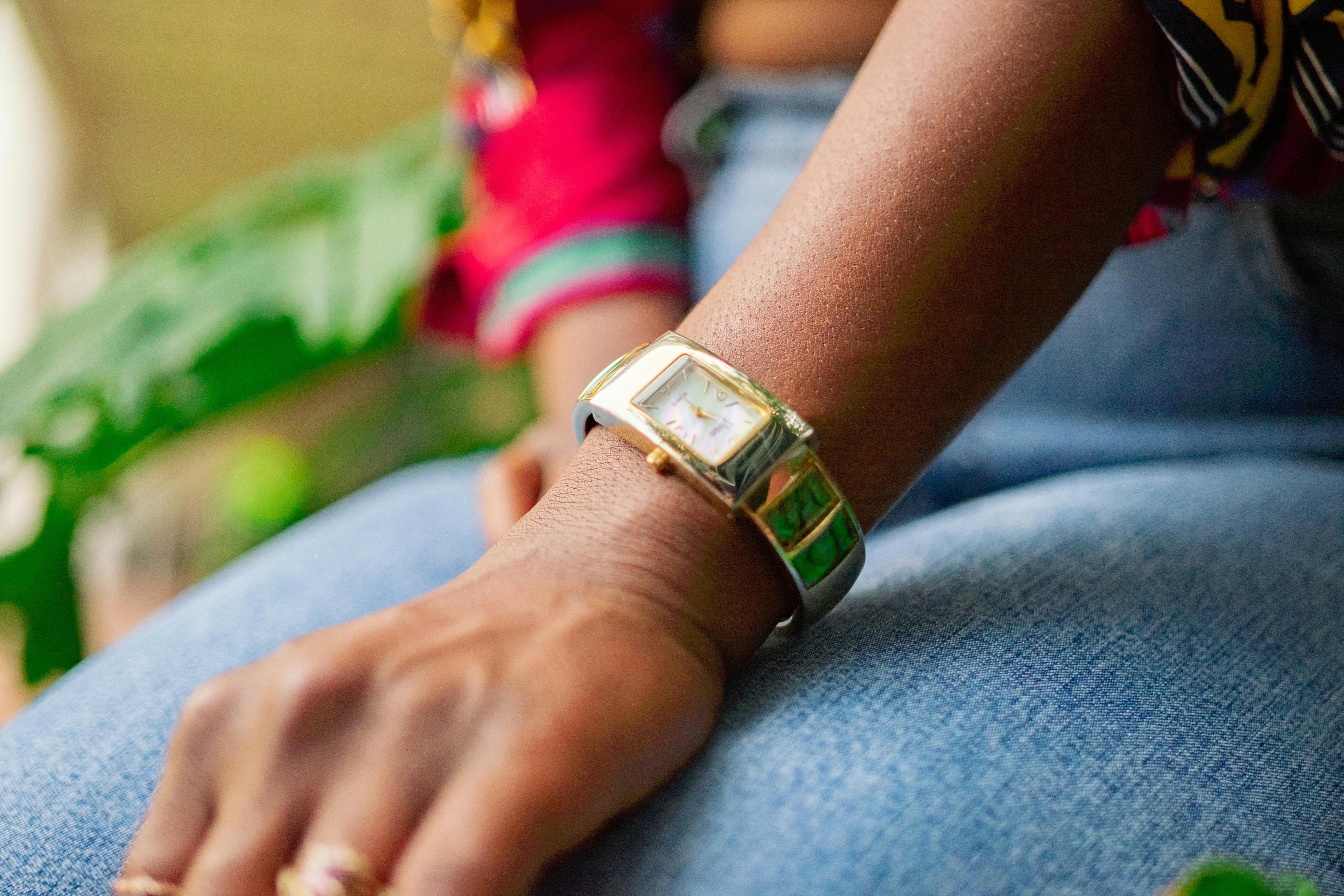What Arm To Wear Watch

Wearing a watch on your arm can be a great way to make a statement, add style to an outfit, and even keep track of time! But what arm should you wear your watch on? It may seem like a simple decision, but the reality is that there are several factors to consider when deciding which arm to put your watch on. In this article, we will discuss the various considerations when selecting an arm for your watch and how to choose the right one for you.When it comes to wearing a watch, the most important decision you’ll make is which arm you’ll wear it on. Generally, the rule of thumb is to wear your watch on your non-dominant hand. This means that if you are right-handed, you should wear your watch on your left wrist and vice versa. Additionally, there are a few other factors to consider when deciding which arm to wear your watch on. Consider the shape and size of the watch in relation to the size of your wrist. If the watch is too large or bulky for your wrist, wearing it on the opposite wrist may be more comfortable. Additionally, if you have any pre-existing medical conditions such as carpal tunnel syndrome or arthritis, consider wearing your watch on the opposite wrist from where you experience pain or discomfort. Ultimately, choose whichever arm feels most comfortable when wearing a watch.
Left Vs Right Hand: Which Arm Should You Wear A Watch On?
When it comes to wearing a watch, there is no definitive answer on which arm you should wear it on. Whether you decide to wear it on your left or right hand is largely a matter of personal preference. However, there are some factors that can help guide your decision.
The most common practice is to wear a watch on the wrist opposite of your dominant hand. For most people, this means wearing the watch on their left hand if they are right-handed and vice versa for left-handers. This practice makes it easier to read and use the watch without having to use both hands.
The type of watch you are wearing can also influence which arm you should wear it on. For instance, if you decide to get a mechanical watch with winding crowns, then wearing it on the non-dominant hand may be more comfortable as you will not have to constantly adjust the winding crown with your dominant hand. On the other hand, if you have an automatic watch with no winding crowns (i.e., one that winds itself by movement), then wearing it on the dominant hand might be more comfortable as it will be easier to move your arm when needed for winding purposes.
In addition, there are cultural and traditional factors that may influence which arm you should wear a watch on. In some countries and cultures, such as France and Spain, people traditionally wear their watches on their left arms while in other cultures such as Japan and India people tend to wear watches on their right arms.
Ultimately, deciding which arm to wear a watch on is up to personal preference and comfort level. If neither left nor right feels particularly comfortable or natural for you, then perhaps try switching arms every so often or even wearing your watch around your neck instead!
Comfort
When selecting an arm to wear a watch, comfort is a major factor to consider. It is important that the watch should fit securely on the wrist without causing any discomfort or pain. The watch should also be light enough so that it does not weigh down the arm or cause any strain. Furthermore, the straps and clasps of the watch should be adjustable so that they can be adjusted to fit different sizes of arms comfortably.
Durability
Durability is another key factor to consider when choosing an arm for a watch. It is important to select a material that is able to withstand wear and tear, as well as changes in temperature and moisture levels. Leather straps are often considered to be one of the most durable materials for watches, while metal bands can also provide great durability if properly cared for. Additionally, it is important to check the quality of construction when selecting a watch band, as poor craftsmanship can lead to premature wear and tear.
Style
Style is another important factor when selecting an arm for a watch. The style of the band should complement both the design of the watch itself and the overall look of the wearer’s outfit. Watches come in many different styles, from classic leather bands to modern metal bracelets, so it is important to find one that best suits your personal style. Additionally, certain colors or patterns may also be chosen based on personal preference.
Cost
Finally, cost should also be taken into consideration when selecting an arm for a watch. Different materials have different price points, so it is important to find one that fits within your budget while still providing quality construction and comfort. Additionally, certain brands may offer discounts or promotions which may make certain models more affordable than others.
Is It Better To Wear A Watch On Your Left Or Right Arm?
When it comes to wearing a watch, there is no one-size-fits-all answer as to which arm is better. This largely depends on personal preference, as well as the type of watch. Traditionally, watches are worn on the left arm, but this does not necessarily mean that it is the “right” way to wear a watch.
For those who are right-handed, wearing a watch on the left wrist may be more comfortable as it will allow full range of motion with your dominant hand without obstruction. However, depending on what type of watch you have (analog or digital), it may be more comfortable and easier for you to read if it is placed on your non-dominant hand.
When wearing an analog watch, some people prefer to wear their watch on the right wrist so that they can easily look at the time with their dominant hand without having to turn their wrist over. This also ensures that the crown (the knob used for setting time) does not press against your skin and cause discomfort when using your dominant hand.
Ultimately, when deciding which arm to wear a watch on, comfort should be key in determining where you place your timepiece. If you are right-handed and prefer an analog watch, wearing it on your left arm may be more comfortable. However, if you prefer a digital display or are left-handed, then wearing a watch on your right arm might work better for you.
No matter which option you choose, make sure that you adjust the band size so that it fits comfortably and securely around your wrist – allowing easy access for reading time while also avoiding any discomfort from chafing or pinching.
Choosing The Correct Arm To Wear Your Watch
The correct arm to wear a watch is an important decision to make. Whether you are a traditionalist or someone who likes to push the boundaries, deciding which arm you will wear your watch on can be a difficult task. Here are some tips to help you decide which arm to wear your watch on:
1. Consider your dominant hand: If you are right-handed, then it is best to wear your watch on the left wrist. This allows for easier access when you need to reach for the crown of your watch. If you are left-handed, then it is best to wear your watch on the right wrist.
2. Consider what activities you will be doing: If you plan on participating in activities that require a lot of hand movement, such as playing sports or doing manual labor, then it is best to wear your watch on the non-dominant hand so that it does not get in the way or get damaged during activities.
3. Consider fashion trends: Another factor that may influence which arm you choose to wear your watch on is fashion trends. Depending on the current trend, watches may be worn either on the left or right wrist and this can vary from season to season and from country to country. So if fashion is important to you, this should be taken into consideration when deciding which arm to wear your watch on.
4. Consider personal preference: Ultimately, it comes down to personal preference and what feels most comfortable for you when wearing a watch. There are no hard and fast rules when it comes to wearing a watch – if wearing it on one wrist feels more natural than wearing it on the other, then go with that!

What Is The Best Side Of The Body To Wear A Watch?
When it comes to wearing a watch, many people have their own preferences and opinions on what they think is the best side of the body to wear a watch. Some may prefer to wear it on their left wrist, while others may prefer to wear it on their right wrist. Ultimately, the best side of the body to wear a watch is a personal decision that should be made based on one’s individual style and preference.
For some people, wearing a watch on their left wrist may feel more comfortable or natural. This is because the majority of people are right-handed and typically use their left hand less frequently than their right hand, so wearing a watch on this side of the body can help prevent any discomfort or strain caused by using the right hand more often. Additionally, wearing a watch on the left hand can also make it easier for those who are left-handed to tell time without having to twist and turn their arm awkwardly in order to read the time.
On the other hand, some people may choose to wear a watch on their right wrist instead. Wearing a watch on this side of the body can make it easier for those who are right-handed to read time without having to contort their arm in an uncomfortable way. Additionally, for those who are more active with sports or hobbies that require frequent use of both hands, wearing a watch on the right wrist can help prevent any discomfort or strain caused by constantly pushing up against the left wrist when engaging in activities such as tennis or golf.
Ultimately, what is considered “the best side” of the body to wear a watch is subjective and depends entirely upon one’s individual style and preference. There is no definitive answer as to which side of your body you should be wearing your watch – both sides have their advantages and disadvantages depending upon one’s lifestyle and activities. Therefore, when deciding which side you should wear your watch on, it’s important that you consider all aspects before making your final decision.
Which One Is Better?
Wearing watches on different arms is a personal preference that people have. Some opt for wearing the watch on their dominant arm, while others prefer wearing it on the opposite arm. Ultimately, it comes down to what feels most comfortable and which arm you can access easily.
If you are left-handed, then wearing the watch on your right arm would make more sense as it would be more convenient for you to access the watch. Similarly, if you are right-handed, then wearing the watch on your left arm would be more comfortable and accessible.
When it comes to accessories like watches or bracelets, some people prefer matching them with their outfit or style statement. If that’s the case then it might be better to wear a specific watch on each arm so that they complement each other in terms of color and design.
Another factor to consider is whether or not you are someone who performs activities with both hands. If so, then it may be better to put the watch on your non-dominant hand so that it does not get in the way of any tasks that require two hands.
At the end of the day, there’s no one rule when it comes to wearing watches on different arms and everyone has their own style preference when choosing which one is better for them.
Pros of Wearing Watches on Different Arms
Wearing watches on different arms can be a great way to accessorize an outfit. Some people like to switch up the look of their watch depending on what they are wearing, and wearing it on the opposite arm can create a different effect. It also helps to keep the watch from getting too much wear and tear as you move around throughout the day. Another advantage is that it can help to improve your posture; if you favor one arm over the other, wearing a watch on both arms can help balance out your body.
Cons of Wearing Watches on Different Arms
The main downside to wearing watches on different arms is that it can be difficult to adjust to. If you’re used to checking the time with one arm, having it switched around can take some getting used to. Additionally, if you are very active or work in a job that requires a lot of movement, switching arms may cause discomfort as your muscles adjust to using both arms equally.

Conclusion
When it comes to choosing which arm to wear a watch on, there is no right or wrong answer. Everyone has their own personal preference and style. Ultimately, the choice of which arm to wear your watch on is up to you. Whether you opt for the traditional left wrist or the more modern right wrist choice, make sure that your watch fits comfortably and looks good with your outfit. With a little bit of experimentation, you can find the right combination of style and comfort for you.
Watches are a great way to accessorize any outfit and add a touch of class and sophistication. The decision on which arm to wear your watch on is entirely up to you. Whichever arm you choose, make sure that it’s comfortable and looks good with your ensemble.
